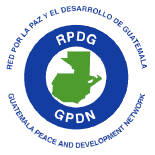The Massacre at the Spanish Embassy in Guatemala
31 of January of 1980-2005
At eleven in the morning on January 31of 1980, a total of twenty-seven peasants, students, and other perceptive individuals entered the Spanish embassy in Guatemala City. After shutting the doors at the entrance, they announced their intention for a peaceful occupation to attract attention to the issues that had been neglected by the government, authorities, news media, et cetera. They also demanded the absence of the Guatemalan police—or any other armed group—and for the immediate presence of Augusto Bauer Arzú, president of the Red Cross in Guatemala. After allowing for some of the most vulnerable individuals to leave, the occupants allowed for ambassador Máximo Cajal to make phone calls to notify the Guatemalan governmental officials of the situation.
The ambassador was unable to make contact with any of the officers, save one, Alfonso A. Lima. After the Guatemalan government became aware of the situation an order was given by president General Lucas Garcia to get the occupants “out of there by any means necessary.” That order was communicated from top to bottom, and within minutes the Guatemalan National Police, detectives, Comando Seis (SWAT), G2 (Army Intelligence), and other well armed groups surrounded the embassy.
As the authorities began to push to get in to the embassy, some of the occupants used a megaphone and begged them to leave from a window. Next, ambassador Cajal held the megaphone and equally asked the authorities to leave the embassy’s ground. The response by some of the armed forces was, “we are following orders.” When the authorities broke in through the main entrance of the embassy, the occupants had ran upstairs inside the ambassador’s office, shut the doors, and put all the furniture they could to block the entrance to the office. The Guatemalan police and others began to break through the wooden doors with digging tools.
This began to make the occupants feel nervous and the fear for the threat to their lives increased. About four or five of the occupants took out hand weapons, and others took out some Molotov cocktails. However, when the occupants tried to light up some of the Molotov cocktails, the ambassador turned off their matches—even after this, the occupants actions were never hostile to the ambassador. When a hole was pierced into the doors, the authorities attempted to introduce a red artifact through the orifice, but it was intercepted by ambassador Cajal and pushed back out. When the door gave in, inert gas and a flamethrower were used on everyone in the office—occupant or not.
The ambassador’s reaction was a quick one, passing through the flames, he ran through the door and got outside, where members of the Guatemalan police attempted to “finish him off” by claiming that he was one of the occupants. Thanks to the intervention from the staff of the embassy and the president of the Red Cross he was released. While all this was going on outside, hell broke loose inside the embassy. The embassy went up in flames; screams from the people being burnt alive were heard, as well as outside pleads to rescue the people inside. No one did anything—not even the firefighters at the scene—until about thirteen minutes later when the bodies where taken out of the embassy. Out of the 39 individuals that were in the office, two survived, ambassador Cajal, and Gregorio Yujá Xona—one of the peasant occupants.
The autopsy revealed that Gregorio survived because when the gas and flames were used the bodies fell backwards one on top of each other, and Gregorio was the last one in that line—however, Gregorio still suffered third degree burns. The two survivors were then taken to Herrera Llerandi Hospital where 20 armed individuals came in and kidnapped Gregorio—ambassador Cajal was protected by the ambassodor of Costa Rica and other important individuals, and family members. Gregorio is found dead—and tortured in spite of his critical condition—on the second day of February.
The Guatemalan authorities deliberately approached this “investigation” with utmost torpor and till this day no one has been punished for the crimes—that forced the people to occupy the embassy or the violent events of genocide that followed the occupation. The people of el Quiche were the ones who had been persecuted by the finqueros (small farm owners) Guatemalan government, and Army. The persecution began when the peasants decided to organize protests for better wages and working conditions.
They were accused of being members of the guerrillas. This lead to the kidnapping of 9 peasants by the army in Uspantán. Two managed to escape, and the other seven were dressed in guerrilla outfits and massacred. Amongst this seven was Rigoberta Menchú’s brother Patrocinio Menchú. This is when some of the peasants began to seek help in the capital city of Guatemala and only found it in the University of San Carlos with the Robin Garcia Student Front (FERG) and other Christian and worker groups.
In the massacre in the Spanish embassy Rigoberta Menchú’s father was one of the occupants who were murdered. After this event Menchú’s mother placed an accusation for the actions of the authorities, and due to this she was kidnapped and never found. The Guatemalan government and Army considered the Indigenous population the “natural allies” of the guerrillas and thus conducted the atrocities to diagnose Guatemala’s condition with genocide. In Guatemala about 250,000 individuals were murdered. Fifty thousand of those were disappeared—which amounts to fifty percent of the total disappeared in Latin America. This is what gives the energy for many to continue to demand justice in Guatemala.
• Produced by the GPDN Chapter of Los Angeles, CA.


2 Comments:
I cry and pray and left Guatemala 3 months ago after myself suffering labor abuses 2012.. for my work --no pay even as an US citizen..will the mind set amongst the elite who believe themselves to be superior and self -ordained to lead mindlessly?
ever evolve enough to FEEL?
Post a Comment
<< Home